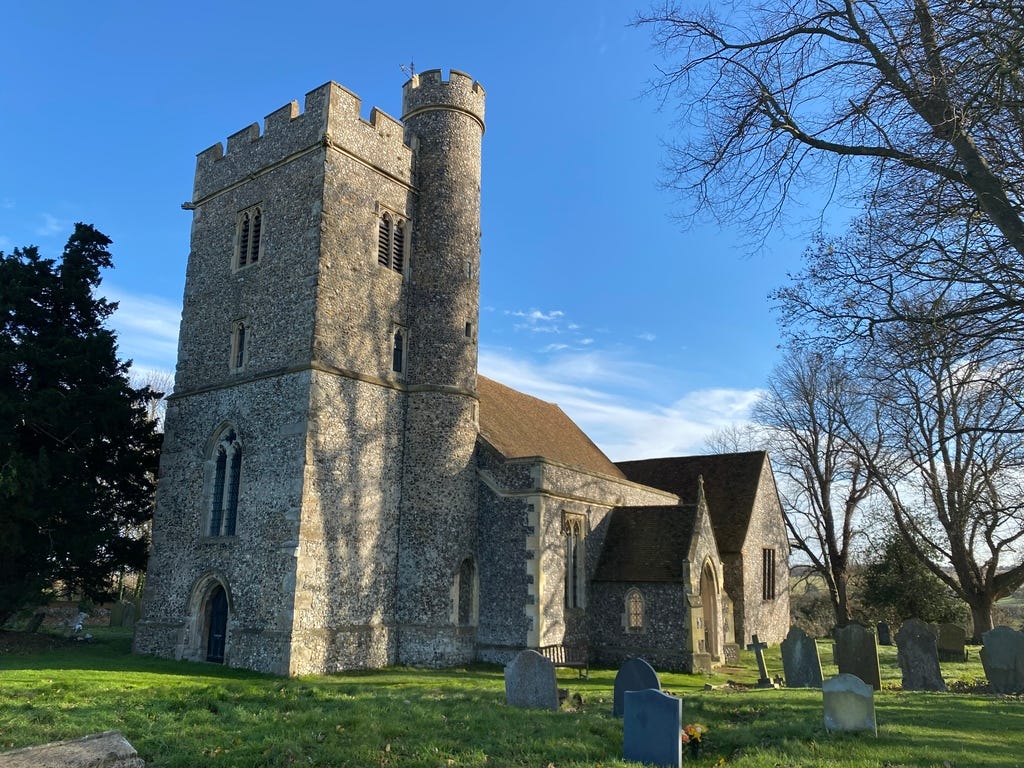From saddle to soil
Two autumn journeys through Kent's wild places
Carol Donaldson is a writer and naturalist. Today, she takes us on two very different autumn wanderings of our county: One by bike through orchards and churchyards to Queendown Warren, and one on foot through Bredhurst Wood in search of fungi and memories of a richer countryside…
Bike riding to Queendown Warren
It has been easy to feel worn down with the housebuilding and traffic issues around Rainham, but heading out of town on my bike, I quickly find myself in the rural country route of Canterbury Lane, speeding through pools of light and shade as I flash in and out of the shadow of the tall poplar trees lining the golf course.
Across the road, a cycle path leads through orchards laden with blushing pink apples. Later into winter, flocks of redwings and fieldfares will descend from Scandinavia to feast on fallen fruit, the chuck chuck chuck of fieldfares, a handsome thrush with a slate grey head, chestnut back and a bandit mask, can often be heard in town as flocks fly over the tower of St Margaret’s Church. Our fruit farmers are having a tough time as supermarkets favour cheaper imports from abroad, so buy British where possible.
I cross the A2 at the Tuck Inn and head up through the outskirts of Hartlip village as flocks of starlings whistle and chip in the hedgerows. A woolly bear caterpillar is crossing the road, all bristling indignation as I pick him up to rescue him from the traffic. These furry caterpillars of the garden tiger moth were once favourites of children, although they have declined in numbers with rising temperatures. The fur is there to protect them from being swallowed by birds, who find the hairs irritate their throats and spit them out.
I park my bike beneath the 900-year-old yew tree in St Mary Magdalene Church, Stockbury. The ancient trunk of the tree is weather-beaten into pinnacles like stalagmites, but the tree is bright with scarlet berries, which blackbirds are feasting on. Presumably, they are immune to the poisonous black seeds within each sweet berry. The trees are associated with death and resurrection, as a limb dropped in a storm quickly roots and regrows. Yews were also associated with ancient Celtic worship sites, and the location of this church, with its views across the valley, would have been an ideal location for our ancestors to worship the constellations and spot enemies approaching.
The square towered church replaced an earlier Saxon building, and next door is a Norman Motte-and-bailey, last used in the Second World War when it supported anti-aircraft guns. Lambs, grown chunky since the spring, are grazing beneath the remains of an old cherry orchard. Sedate now, all the skip of a few months ago seemingly lost with their lolloping tails.
Inside the church, there are bats in the belfry. Little black droppings, like dried coffee grounds, can be spotted on the pews. I think of the bats hiding in the crevices of the old oak beams that criss-cross the ceiling and emerging at night to flit through the forest of stone columns. Churches provide an important sanctuary for our bats at a time many are being evicted by housing renovations and developments.
Keep reading with a 7-day free trial
Subscribe to Kent Current to keep reading this post and get 7 days of free access to the full post archives.


